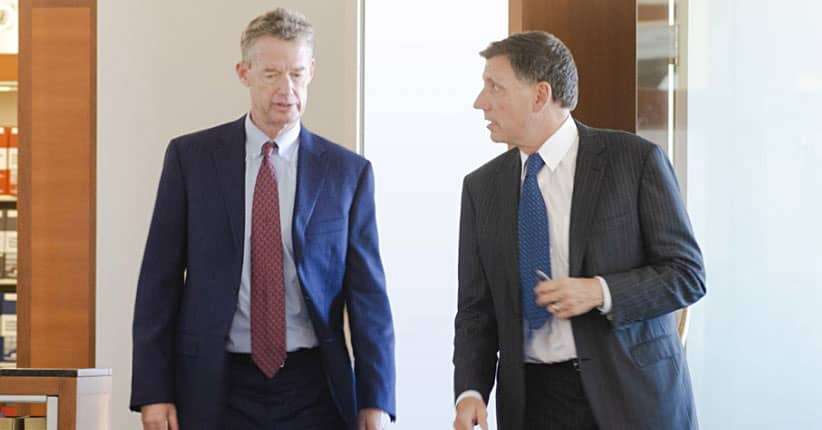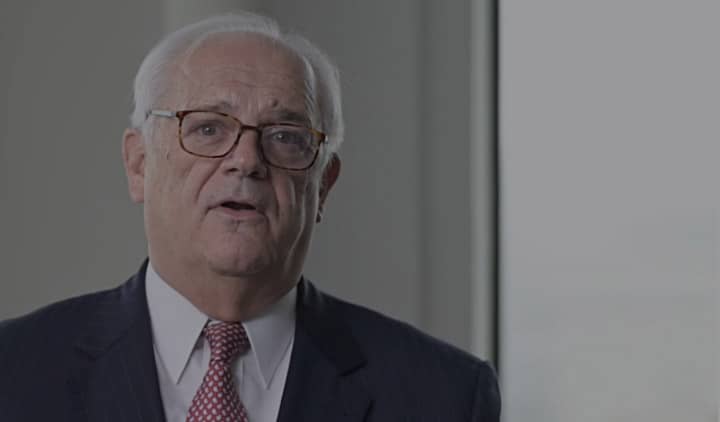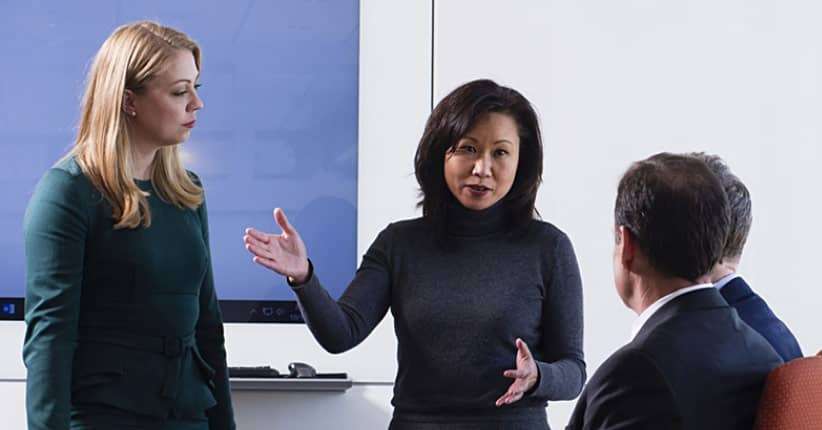Following three weeks of evidence and argument, we are pleased to report that Rich Schoenberger and Joe Nicholson obtained one of the largest verdicts in San Luis Obispo County history in the amount of $5,510,000 arising out of a poorly designed highway construction project. Rich and Joe were associated into the case just two months before trial in the face of a zero settlement offer. Their verdict is a victory for all motorists who are forced to navigate construction zones on California’s public highways.
The Cuesta Grade project was planned and executed under CalTrans’s authority and supervision. The general contractor Telfer subcontracted with defendant Anrak Corporation for the asphalt grinding portion of the work. All three were named defendants.
On August 12, 2015, plaintiff Mickey Bruce was driving home from his job as a Caltrans inspector, traveling north on Highway 101 in the #1 lane on the Cuesta Grade. At this time the highway was undergoing a repaving project.
Mr. Bruce, traveling 60-65 mph on his motorcycle, was confronted with a vehicle in front of him that had come to an abrupt stop in the fast lane. Mr. Bruce struck it from behind in a violent collision. To complicate matters, at least one eyewitness described Mr. Bruce looking in the opposite travel lanes where the paving project was underway just prior to the collision. It was unclear whether Mr. Bruce had actually braked his motorcycle prior to rear-ending the car in front of him. There were no skid marks and the defense offered convincing evidence that he had not braked.
The foregoing facts framed the defense theory and explained the absence of a settlement offer before trial. For the defense, it was all about the plaintiff’s comparative negligence
The force of the collision launched Mr. Bruce over the stopped vehicle and into the highway. He sustained serious orthopedic injuries including a shattered pelvis, a fractured hip requiring a total hip replacement with the probability of another surgery in 18-20 years, a severely fractured left wrist with a likelihood of wrist fusion within five years, fractures to his right ankle and the heels of both feet, and a fracture of the L3 vertebrae.
The stopped vehicle had come to a stop because a construction pickup truck operated by an employee of Anrak had just attempted an illegal left turn from the northbound shoulder, across the northbound lanes. For Rich and Joe, the case came down to why in the world such a left turn was ever made.
It was learned that the Anrak employee had made the left turn from the northbound shoulder at the instruction of Telfer’s superintendent. Anrak was grinding asphalt in the southbound lanes, but its grinders were staged off of the northbound shoulder. Rather than load the grinders onto trailers for the purpose of transporting them to their work location, Telfer’s superintendent decided to have Anrak employees simply drive the grinders across the northbound lanes. The superintendent intended to slow or stop northbound traffic with Telfer’s own vehicles as opposed to seeking assistance from CHP officers who were available for traffic breaks. Telfer needed three vehicles to cover the three northbound lanes but it only had two available, so it sought assistance from Anrak. Anrak, which does not participate in any traffic control measures, nonetheless volunteered a 24-year-old employee who had never performed a traffic break.
In front of the jury, Telfer argued that it owed no duty to Mr. Bruce nor to the general public despite its control of the construction site. The plaintiff’s trial team put the focus on Telfer, demonstrating that its superintendent had safer, feasible alternatives to the ad hoc traffic break. The trial team proved that CHP officers were on the project at the time to perform traffic breaks, and that CHP officers were never contacted.
In cross-examining the Anrak driver whose turn across three lanes of oncoming traffic triggered the collision, Rich elicited the admission that the driver had actually wanted to enter with the flow of traffic and use a proper overpass instead of cutting across traffic, and that his drive across traffic was unsafe.
From opening to closing, Telfer never accepted any responsibility for Mr. Bruce’s injuries arguing that the collision was attributable exclusively to his inattention. It hired human factors, motorcycle and mechanical engineers to support its theories that plaintiff easily could have avoided the collision had he simply been paying attention.
Plaintiff’s pre-trial $3.5 million global settlement demand remained open through the trial. With the case submitted to the jury, Telfer made a final offer of $200,000. Ultimately, the jury concluded that Telfer unreasonably endangered the public, causing Mr. Bruce’s injuries and awarding him $1,010,000 in economic damages and $4,500,000 in non-economic damages. In addition to putting 50% of the fault on Telfer, the jury allocated 17% responsibility to Anrak for a net verdict of $3,691,700. Because the result exceeded plaintiff’s 998 to Telfer, post-offer costs were also recoverable. We congratulate Rich and Joe on a tremendous result.
Learn more about Attorney Referrals


